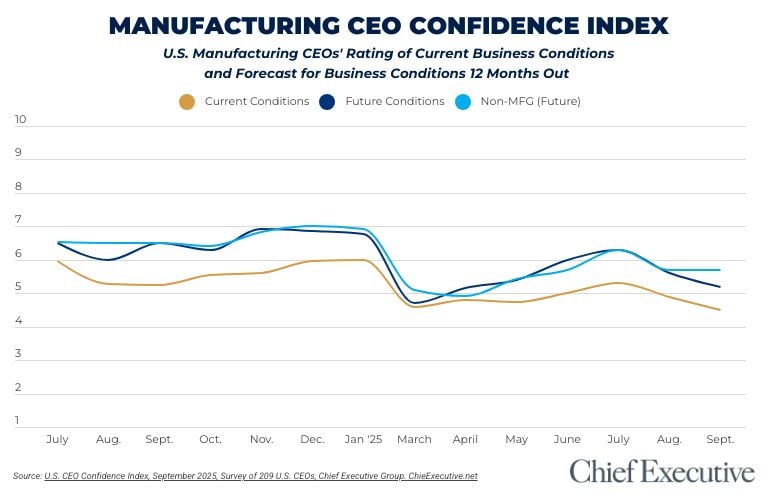
If your company was presented with the opportunity to retool its product line around personal protective equipment during a global pandemic, would you seize it?
Most of us would like to believe our answer would be a resounding “Yes.” During the spring lockdown period, you couldn’t miss the stories about how pivoting to the PPE market helped many business leaders keep their operations humming, avoid layoffs and do some good in the world. And few products are in as heavy demand today, or will be for the foreseeable future, as PPE.
What we don’t hear about, however, are all the missed opportunities, often by smaller companies that rarely if ever make national headlines. As a member of the Ohio Manufacturing Alliance to Fight Covid-19, I’ve seen a few manufacturers step up. Most impressively, I saw Sensical, a Cleveland-area auto-parts maker, rush headlong to help fill the shortage of PPE; we were all shocked by the photos of New York nurses wearing garbage bags — but this company’s leaders did something about it. In less than a month they were producing 80,000 hospital gowns a day, with 190 new employees.
But I’ve seen many more let the opportunity pass them by. This isn’t a knock on those who did. We’re in a crisis, and every individual, business and institution responds differently, for lots of reasons. But that doesn’t mean we shouldn’t learn from those who did plow ahead. Because in most cases, the differences between those who said “yes” and those who said “no” had little to do with capabilities, manpower or technical skill — and everything to do with leadership. Specifically, nimble leadership.
I believe that the nimble leadership displayed by a few manufacturing executives in pivoting to PPE production is more than an inspiring story of business leaders rising to the occasion in our darkest hour. It also provides helpful lessons for everyday leadership.
Here are a few attributes of nimble leadership that I saw in the depths of the Covid crisis and that I believe others can learn from.
When Sensical decided in March to shift to producing hospital gowns, they knew they had to be aggressive. Rising to meet the need for PPE meant making significant investments at a moment when 70 percent of their old business had shut down: investments not only in new staff, but in new equipment, materials and product design. There was no guarantee the investments would pay off; even with the pandemic raging, somebody else could have beaten Sensical to market, or made a superior product. Or overseas factories could’ve reopened and come back with a lower price. But the company’s leaders went for it anyway – and they found a way to meet the demand, deliver a product that hospitals, state entities and other customers embraced, at a price that was competitive to overseas production.
It would be easy to see this as merely an example of a small-business leader taking a flyer when their backs were to the wall. But it’s a lesson for larger and richer organizations, too. Those are the companies that, having grown comfortable with their success, become stagnant. Economist William Lazonick places this stasis into a broader shift that began taking place in the ‘70s: from a focus on product innovation to the maximization of profit (and shareholder value) above all else. According to Lazonick, this ideology – and, for instance, the rise in stock buybacks – explains why US pharmaceutical companies have lost ground to their European rivals.
Business leaders in every industry should take note – and prepare themselves to take smart risks, fast.
A problem we saw again and again was that manufacturers looking to help with PPE didn’t bother with demand; they just started making the thing they assumed would be useful without actually asking the end users if they needed it, or how they needed to be made. This slip-up led many well-meaning manufacturers to produce thousands of face shields that were never used – including fancy ones with components hospitals couldn’t effectively clean.
Connecting with customers doesn’t have to be a complicated task. In March, the CEO of Cleveland Whiskey simply walked into the nearby Cleveland Clinic and asked if they needed more hand sanitizer; as he began to produce it, he maintained a constant dialogue around the right methods for delivering it.
Sensical’s leadership, meanwhile, read the news like all of us. They knew the people battling Covid on the frontlines needed better gear. Still, they made sure to engage various procurement groups at hospitals before developing their PPE product. And they have continued to listen; leadership now knows their buyers expect prices to go down, thanks to the reopening of Chinese factories, and they’re investing in automation to stay competitive.
It’s hard to move fast on your own. Nimble leaders – in a crisis or otherwise – have to be willing to reach out to their networks for help, and look to make new connections at the same time. In the Covid era, with US businesses hoping to stabilize their supply chains by moving them closer to home, it’s increasingly important to look in your own backyard.
Sensical’s CEO, for instance, called in the help of a nearby plastics manufacturer; connected with local lumber suppliers to provide the wood needed to build sealing tables; and used six different staffing agencies to find new employees in the area.
Meanwhile, Cleveland Whiskey partnered with Proctor & Gamble to bottle hand sanitizer the consumer giant donated, allowing the distillery to quickly scale up its output. Noticing a lack of small spray dispensers, they asked Axium, a manufacturer of plastic containers with operations in Columbus, to donate bottles; MAGNET, the Cleveland manufacturing consultancy where I work, donated pour spouts and cartons.
It’s tempting to read these stories about nimble leadership and write them off as crisis cases. But is it really so different from acting on any new business opportunity? These principles – risk taking, staying close to your customers, collaboration – can apply to any business venture, whether it’s a startup or a multinational corporation’s new product. Permeating them through an organization’s culture starts at the top.




Chief Executive Group exists to improve the performance of U.S. CEOs, senior executives and public-company directors, helping you grow your companies, build your communities and strengthen society. Learn more at chiefexecutivegroup.com.
0

1:00 - 5:00 pm
Over 70% of Executives Surveyed Agree: Many Strategic Planning Efforts Lack Systematic Approach Tips for Enhancing Your Strategic Planning Process
Executives expressed frustration with their current strategic planning process. Issues include:
Steve Rutan and Denise Harrison have put together an afternoon workshop that will provide the tools you need to address these concerns. They have worked with hundreds of executives to develop a systematic approach that will enable your team to make better decisions during strategic planning. Steve and Denise will walk you through exercises for prioritizing your lists and steps that will reset and reinvigorate your process. This will be a hands-on workshop that will enable you to think about your business as you use the tools that are being presented. If you are ready for a Strategic Planning tune-up, select this workshop in your registration form. The additional fee of $695 will be added to your total.

2:00 - 5:00 pm
Female leaders face the same issues all leaders do, but they often face additional challenges too. In this peer session, we will facilitate a discussion of best practices and how to overcome common barriers to help women leaders be more effective within and outside their organizations.
Limited space available.

10:30 - 5:00 pm
General’s Retreat at Hermitage Golf Course
Sponsored by UBS
General’s Retreat, built in 1986 with architect Gary Roger Baird, has been voted the “Best Golf Course in Nashville” and is a “must play” when visiting the Nashville, Tennessee area. With the beautiful setting along the Cumberland River, golfers of all capabilities will thoroughly enjoy the golf, scenery and hospitality.
The golf outing fee includes transportation to and from the hotel, greens/cart fees, use of practice facilities, and boxed lunch. The bus will leave the hotel at 10:30 am for a noon shotgun start and return to the hotel after the cocktail reception following the completion of the round.